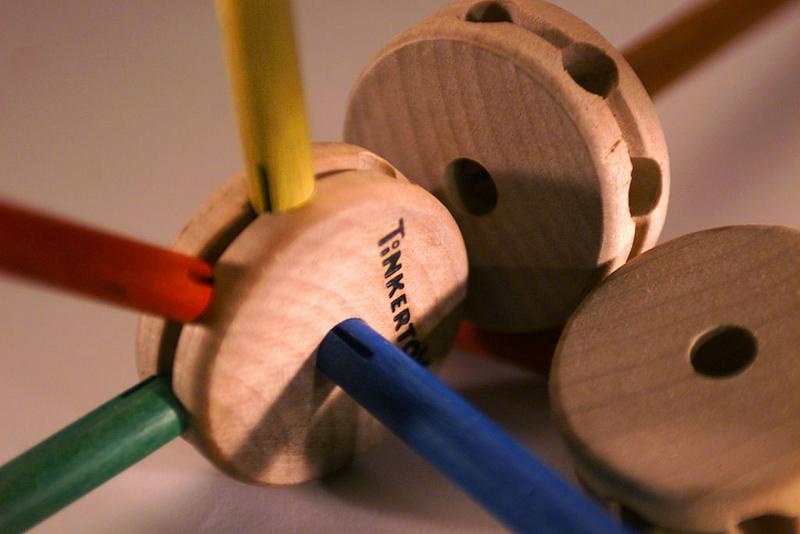The Bizarre Christmas Marketing Stunt That Made Tinker Toys A Hit
By | November 24, 2021

Like Lincoln Logs, Tinker Toys were popular because they allowed children to express their unlimited creativity, but unlike those cabin beams, they weren't an instant success. In fact, the toy's creators could barely give them away. Undeterred, they came up with a clever marketing stunt ahead of Christmas 1915 that would raise some eyebrows today but resulted in millions of sales.
Becoming Tinker Toys
In the early 1900s, Charles Pajeau, a stonemason by trade who was living in Evanston, Illinois, observed a group of kids playing with discarded spools of thread on his morning walk to work, inserting pencils into the holes of the spools to build tall towers. He marveled at their ingenuity, but he could see they were frustrated by the limitations of the spools. Drawing on his background as a stonemason, Pajeau added more holes around the circumference of his wooden spools so the rods could form 45- and 90-degree angles.
He had his idea but nowhere to start until he happened to sit next to Robert Pettit, a trader with the Chicago Board of Trade, on a commuter train in 1913. Pajeau mentioned his idea to Pettit, and soon, the two men formed the Tinker Toy Company in Pajeau's garage. Pajeau replaced the pencils with wooden dowels or rods of varying lengths, made the spools flatter and larger, and kept the center hole but also added eight holes around the edges of the spools.

A Marshall Field Day
Certain they had a new hit toy on their hands, the two men packed up several Tinker Toy sets and headed to New York City to attend the 1914 American Toys Fair, where toy makers showed their inventions to manufacturers and department stores. Alas, no one was interested in the Tinker Toys. Dejected, the two men unloaded a few sets to random stores on the way back to their hotel simply because they no longer wanted to cart around the unwanted toys.
But Pajeau and Pettit weren't ready to give up. Convinced that children would love Tinker Toys if they were just given a chance to see them in action, they set up a meeting with the store managers at the biggest department store in Chicago, Marshall Field's, and asked for one of their coveted store windows to display their toys as well as shelf space inside the store. They also offered to provide dwarf actors to dress as Santa's elves and play with the toys, which cinched the deal for Marshall Field's, who believed the presence of live elves in their store window would drive traffic to their store.
The idea worked for everyone. Youngsters and their parents crowded around the sidewalk outside the Marshall Field's Tinker Toys display window to see what the elves were building and then stormed to the fourth-floor toy department to get their own sets. By Christmas 1915, Marshall Field had sold more than a million Tinker Toy sets.

